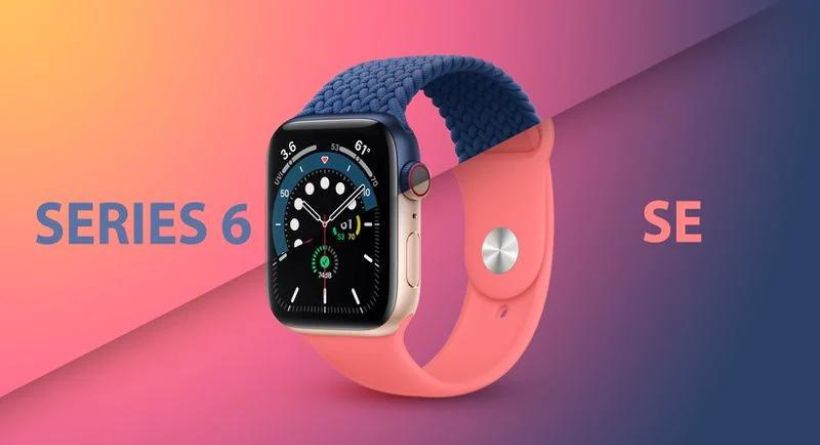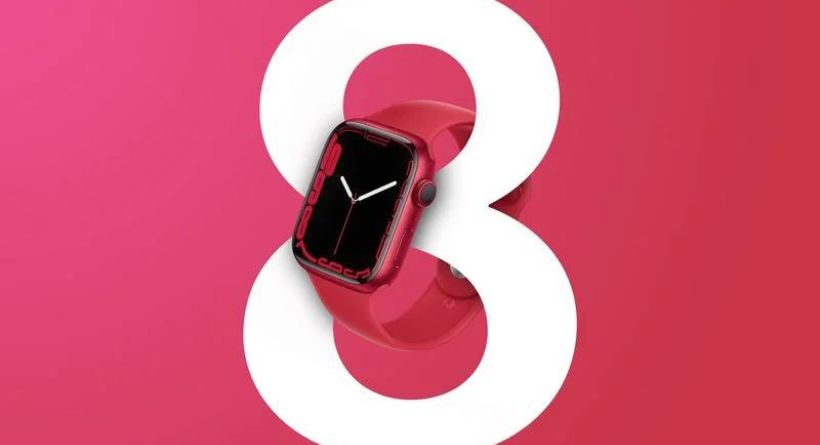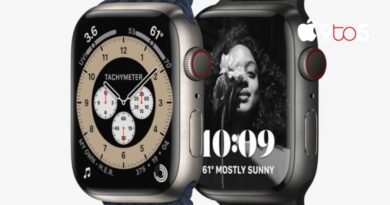Apple Watch SE vs. Apple Watch Series 6 Buyer’s Guide
The Apple Watch Series 6 and the Apple Watch SE are two new models that Apple added to its popular Apple Watch portfolio in September 2020.
With a starting price of $399, the Apple Watch Series 6 delivers a number of enticing enhancements over the 2019 Series 5, including a new S6 processor, an U1 ultra-wideband chip, and blood oxygen monitoring. Apple Watch SE, a whole new iteration of the Apple Watch, was unveiled at the same time. With a starting price of $279, this new model delivers many of the Apple Watch features that have made the gadget so popular over the years.
Since then, Apple has updated the Apple Watch Series 6 with the Apple Watch Series 7, although the Series 6 is still offered by certain independent merchants for costs far less than the $399 starting price.
It may not be immediately clear which of these two models is preferable for you since they share many essential characteristics, including as design, water resistance, and an optical heart sensor. Does it make sense to buy the less expensive model with less features? How to choose which of these two Apple Watch models is ideal for you is addressed in our guide.
Comparing the Apple Watch Series 6 and the Apple Watch SE
The majority of the features between these two Apple Watch versions are same. The two models’ similar characteristics are listed by Apple as follows:
Similarities
- Casing size of 40mm or 44mm
- Retina LTPO OLED display, 1,000 nits of brightness
- Models with GPS and GPS + Cellular
- Dual-core 64-bit processor
- Wireless W3 chip
- Haptic feedback on a digital crown
- optocardiogram sensor
- Notifications of high and low heart rates and irregular heartbeat
- Emergency SOS, emergency phoning internationally, and fall detection
- Noise recording
- Wi-Fi and Bluetooth 5.0 Support for Family Setup (GPS + Cellular versions); 50-meter water resistance; “swimproof”
- An always-on altimeter and a compass
- 32GB of storage space
- “All-day” battery life of 18 hours
According to Apple’s analysis, the two models have a huge number of characteristics in common. ECG and blood oxygen monitoring are two minor but significant changes between the Apple Watch Series 6 and the Apple Watch SE that are worth emphasising.
Differences
Series 6 Apple Watch
- S6 SiP with a 64-bit dual-core CPU and an U1 ultra-wideband chip with an always-on Retina display
- App for Blood Oxygen
- An ECG app
- Electrical heart sensor, second-generation optical heart sensor, and blood oxygen sensor
- Enhanced battery life for certain exercises, quicker charging
- Blue and (PRODUCT) RED are new hues.
SE Apple Watch
- Retina display
- S5 SiP with 64‑bit dual-core processor
- Optical heart sensor only
Displays
The Retina LTPO OLED display on the Apple Watch Series 6 and Apple Watch SE both has a brightness of 1,000 nits. The Series 6 features an always-on display, which is the main distinction. As a result, you can always view your watch face without needing to lift your wrist properly since the display is on even when you lower your wrist.
When the wearer’s wrist is down outside, the Apple Watch Series 6 always-on display is up to 2.5 times brighter than the Apple Watch Series 5’s, making it considerably simpler to see the watch face in direct sunshine. Users may now access Notification Center and Control Center while their wrist is down, touch on complications, and slide to switch faces without waking their watch screen.
Because the Apple Watch SE lacks an always-on display, users must lift their wrist or touch the screen to view their watch face.
The high-resolution Retina screens themselves are the identical in both versions apart from this functionality. The Apple Watch SE’s display will be more than suitable for your requirements unless you feel the need to always be able to view your watch face without elevating your wrist.

Processor S6 vs. S5
The Apple Watch Series 6 and Apple Watch SE both have a 64-bit dual-core CPU. The more recent S6 CPUs are up to 20% quicker than the S5 processors and are based on the A13 Bionic in the iPhone 11. Apple claims that despite preserving the same “all-day” 18-hour battery life, applications can now start 20 percent quicker.
The S5 dual-core processor from the Apple Watch Series 5 is carried over to the Apple Watch SE, which, in Apple’s words, “delivers extraordinarily quick performance.” Compared to Apple Watch Series 3, the S5 is up to twice as quick.
The S5 processor, which debuted in the Apple Watch Series 5, was already a good one; the S6 just delivers a more sophisticated chip. Unless you really want quicker app launch times, the little performance enhancements of the S6 processor do not appear to be sufficient to warrant purchasing the Apple Watch Series 6 over the Apple Watch SE. The Apple Watch SE’s processor will be sufficiently quick and effective for the majority of customers.
Chip U1 for Ultra-Wideband
The U1 ultra-wideband processor is exclusive to the Apple Watch Series 6. Although it is yet unknown what else the U1 chip in the Apple Watch could provide, Apple claims that it will “allow short-range wireless location to support new experiences, such as next-generation digital auto keys.”
More accurately than Bluetooth LE and Wi-Fi, the distance between two ultra-wideband-capable devices may be determined by estimating the time it takes for a radio wave to travel between them.
Despite increasingly using the processor in its new products, Apple has not yet unlocked any significant new functions for the Apple Watch. There’s a chance that the U1’s capabilities on the Apple Watch Series 6 will grow in the future.
It is not worthwhile to purchase the Apple Watch Series 6 only for the U1 processor since there are now so few use cases for it. But if you want to keep your Apple Watch for a long time, the U1 chip will probably make it a lot more future-proof model given the strong likelihood that new features will be added in the years to come.
Health surveillance
Blood oxygen monitoring is a brand-new health monitoring function on the Apple Watch that has never been available before in the Apple Watch Series 6. The user may better understand their general health and fitness by using the function, which checks the oxygen saturation of their blood. The amount of oxygen transferred by red blood cells from the lungs to the rest of the body is known as oxygen saturation, or SpO2, which measures how effectively the oxygenated blood is being distributed throughout the body.
The blood oxygen sensor for the Apple Watch Series 6 includes four clusters of green, red, and infrared LEDs on its back. They use an innovative bespoke algorithm to monitor the light reflected back from blood and can calculate blood oxygen saturation between 70% and 100%.
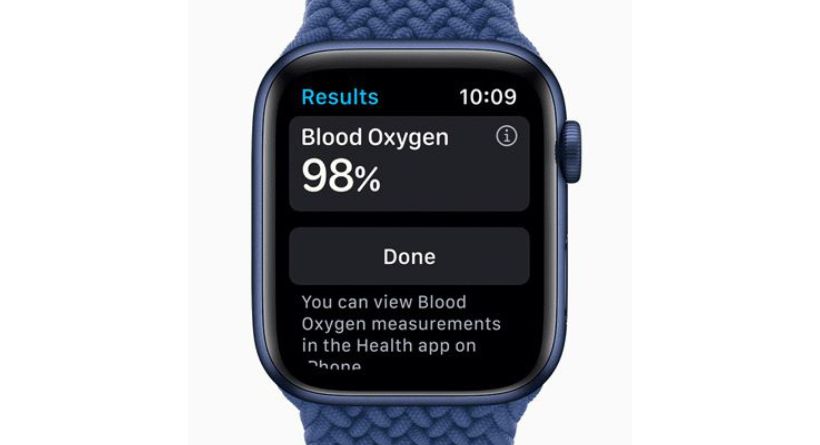
The Blood Oxygen app allows for on-demand tests, and regular background measures are also made, even while you sleep. The user may see all data in the Health app and follow trends over time to monitor changes in their blood oxygen level.
The electrical heart sensor from earlier versions, which is used to record electrocardiograms, or ECGs, is also included in the Apple Watch Series 6. The Apple Watch Series 6 contains an electrical heart rate sensor on the back and electrodes embedded into the Digital Crown. Users using the ECG app touch the Digital Crown to get a heart rhythm classification after 30 seconds. It may categorise whether the heart is beating normally or if there are indications of atrial fibrillation (AFib), a disorder of the heart that may cause serious health issues. The Health app stores all recordings in a PDF that can be shared with medical professionals, along with any symptoms that were noticed and the categories that go with them.
The blood oxygen or electrical cardiac sensors needed to track any of these health indicators are not included in the Apple Watch SE. The Apple Watch SE does have the capability to capture health information, however.
An optical heart sensor in the Apple Watch SE measures heart rate and can provide alerts for high and low heart rates as well as irregular heartbeats. Like the Apple Watch Series 6, the less expensive device is still capable of emergency SOS, fall detection, and noise monitoring.
The key selling point of the more costly Apple Watch Series 6 are the added health monitoring functions. Consider the Apple Watch Series 6 if you feel that ECG and blood oxygen monitoring will be significant to you. Even without these cutting-edge health functions, the Apple Watch SE still boasts some useful health monitoring features.
Battery
Both Apple Watch models continue to have a “all-day” battery life of around 18 hours, according to Apple.
However, Apple Watch Series 6 promises enhanced battery life for monitoring certain exercises, such as indoor and outdoor runs, and quicker charging, finishing a full charge in under one and a half hours. Additionally, the Series 6 has been adjusted such that it shouldn’t be harmed by its always-on display.
It probably isn’t worthwhile to prefer the Series 6 based just on quicker charging and somewhat better battery consumption during certain activities as the battery life of both versions is essentially the same. Instead, the Series 6’s battery and charging advancements continue to be a significant sign of how the gadget delivers a number of tiny but significant upgrades over the Apple Watch SE.
Design
Although they have a similar fundamental design, the Apple Watch Series 6 and Apple Watch SE have different materials and colour choices.
While the Apple Watch SE is only available in aluminium, the Apple Watch Series 6 is also available in titanium and stainless steel. Apple Watches made of stainless steel or titanium also include sapphire crystal displays, as opposed to the Ion-X strengthened glass used in aluminium versions.
There are six different colour options for the aluminium Apple Watch Series 6: silver, space grey, gold, blue, or (PRODUCT) RED. It is offered in Silver, Graphite, or Gold for stainless steel and Titanium or Space Black for titanium. Only Silver, Space Gray, or Gold are available for the Apple Watch SE.
The Apple Watch Series 6 is the only model that offers these materials and colour choices, so if you want stainless steel, titanium, or a Blue, (PRODUCT)RED, Graphite, Titanium, or Space Black finish, you should choose one of them instead. The Apple Watch SE, on the other hand, will do if you’re happy with a lightweight aluminium case and simple Silver, Space Gray, or Gold finishes.
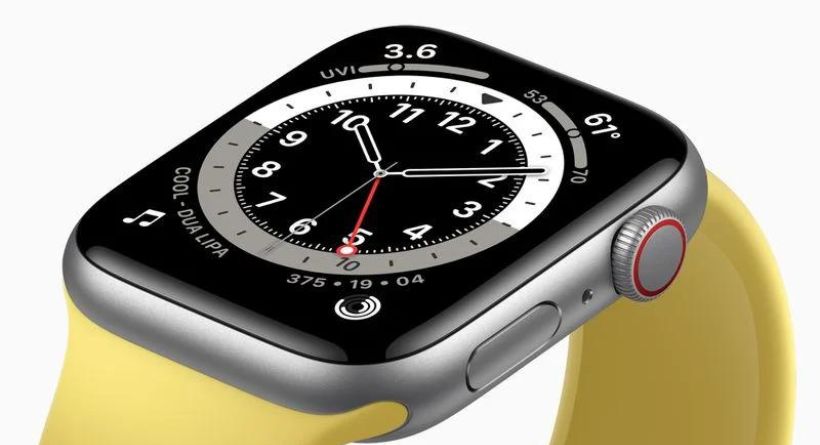
Alternative Apple Watches
The Apple Watch Series 3 is also available through Apple for $199. This older model has a smaller screen and much less functions. With 8GB of storage, water resistance of up to 50 metres, an altimeter, Emergency SOS, and an optical heart sensor, the Apple Watch Series 3 is still a powerful gadget. Because it is thicker and has bigger bezels than the Apple Watch SE, it functions more simply.
The least future-proof model is the Apple Watch Series 3, which is essentially primarily meant for those who want an Apple Watch at the lowest price. Given that the Apple Watch Series 3 is a considerably older device, you should absolutely choose an Apple Watch Series 6 or Apple Watch SE if you can afford them.
Final Reflections
Apple Watch Series 6 has additional features including blood oxygen monitoring, the S6 and U1 processors, and an always-on altimeter, making it a significant upgrade over the previous Series 5 model. The Apple Watch Series 6 will be the model of choice for individuals who want more from their wearable due to its always-on display, sophisticated health monitoring functions, and selection of colours and finishes. The Apple Watch Series 6 is the perfect model for you if you are especially interested in health monitoring or just enjoy a certain case and colour scheme.
Alternatively, the Apple Watch SE is a very attractive alternative if you are on a tight budget and are not especially drawn to the extra capabilities of the Series 6. For many Apple Watch users, especially those who are brand-new to the gadget, the SE model is the preferred choice.
The Apple Watch SE will probably be the more widely purchased of the two models, making it the obvious pick for the majority of prospective buyers. Given how many things it has in common with the Apple Watch Series 6, you should only buy the more costly model if you can afford it and desire extra features like the always-on display or sophisticated health monitoring.

